The Healthcare and Medical industry handles highly sensitive data, including protected health information (PHI), making it a prime target for cyberattacks. Strict cybersecurity regulations exist to ensure the confidentiality, integrity, and availability of patient data while protecting against breaches and unauthorized access. Below is an overview of the key cybersecurity regulations for the healthcare sector:
Cybersecurity Regulations for Healthcare & Medical
Healthcare and medical institutions in the United States, including California, are subject to a combination of federal and state cybersecurity regulations. Below is a concise breakdown of the key requirements:
Federal Cybersecurity Regulations
HIPAA (Health Insurance Portability and Accountability Act)
– Privacy Rule: Requires safeguards to protect the privacy of protected health information (PHI) and restricts its use and disclosure without patient authorization.
– Security Rule: Mandates administrative, physical, and technical safeguards to ensure the confidentiality, integrity, and security of electronic PHI (ePHI). This includes:
– Regular risk assessments
– Workforce training
– Access controls
– Encryption of data
– Audit controls
– Assigning a security officer
– Security policies and procedures
– Breach Notification Rule: Requires notification to affected individuals, HHS, and sometimes the media in the event of a breach involving unsecured.
– Upcoming Updates: New rules are being proposed to strengthen requirements, including mandatory encryption, network monitoring, and compliance checks.
Other Relevant Federal Regulations
– 42 CFR Part 2: Applies to records from federally funded substance use disorder treatment programs, with strict privacy and security requirements.
– FDA Quality System Regulation (QSR): Imposes cybersecurity requirements on medical device manufacturers and, by extension, healthcare providers using those devices, such as data encryption and authentication.
California State Cybersecurity Regulations
California Confidentiality of Medical Information Act (CMIA)
– Requires healthcare providers to implement reasonable administrative, technical, and physical safeguards to protect medical information from unauthorized access, use, or disclosure.
California Consumer Privacy Act (CCPA)
– Applies to health data not covered by HIPAA or CMIA.
– Requires businesses to implement reasonable security procedures and practices to protect personal information.
– CCPA guidance recommends following the 20 security controls published by the Center for Internet Security (CIS).
Breach Notification Requirements
– California law requires notification to the state Attorney General if a breach affects more than 500 residents, in addition to notifying affected individuals.
Best Practices and Guidance
– The California Attorney General has issued bulletins urging healthcare providers to take proactive cybersecurity measures, including timely breach reporting and following federal and state security standards.

Conclusion
Healthcare organizations in California must comply with both federal (HIPAA, FDA, etc.) and state (CMIA, CCPA) regulations, ensuring robust safeguards, breach notification processes, and adherence to evolving best practices.

